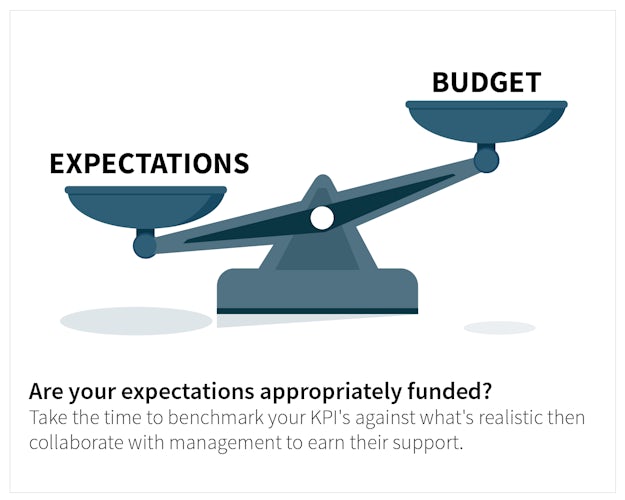Your employer made an investment in you at the time you were hired. The investment was that one day, you would be called upon to formulate a strategic marketing approach for your brand or product.
Your strategy would inevitably move the company forward and positively impact customers, shareholders, and your patient group. This opportunity can make or break your career, so you’ll need more than instincts and hunches to convince management to fund your strategy. It’s time to build a team (coworkers, vendors, subject matter experts) that will produce an airtight case for your marketing strategy. But your management team doesn’t want to be on the hook for your ambitious ideas should this fail.
This article will share advice to the pharmaceutical, biotech, and medical device marketer on how to sell your marketing strategies to upper management by reducing risk, supporting ideas with data, benchmarking success, and having a strong plan B.
1. Prime your market
There is a market for your product. That was made clear by the research and development team that brought you to this point. But who is your market? What are their needs? More importantly, what are they expecting, and do they know your product exists?
For innovators or orphan drug manufacturers, it’s possible your audience doesn’t see you coming. The recommendation is to measure and market disease awareness long before the launch of your campaign. This pre-marketing allows you to learn about your customers. Learn what they care about, build customer profiles and contact lists, and identify media channels that will inform your future ad campaign. For example, before the launch of a new joint pain medication, consider a pre-marketing campaign that can build a wide sales funnel and attract prospective patients seeking solutions for chronic joint pain. In the funnel, prospective patients can experience education-awareness social media content. They can watch testimonial videos describing symptoms, or talk by phone with a nurse trained in identifying qualified patients. Management will enjoy a significant head start in creating patient profiles and social media interaction.
2. Learn from your predecessors
Countless marketing campaigns have taken flight prior to yours. Their digital records offer clues to your campaign’s future performance. Digital agencies sit atop a mountain of this business intelligence – learnings from previous clients and campaigns.
There’s no need to experiment with the unknown by creating unnecessary risk. Do women 50+ respond to Facebook ads promoting healthcare products? What keywords are associated with sleep disorders after 11:00 pm? Your task is to find an agency partner that can use previous campaign performance metrics to validate your ideas.
3. Define your success
How well did your campaign perform? Was it budgeted adequately for success? Is the management team happy? Success depends on setting proper expectations and making sure all stakeholders are aligned. The most significant point of failure for any marketing campaign is the failure to agree on success metrics with your agency management team and the client side brand managers.
Take the time to benchmark your KPIs against what’s realistic then collaborate with management to earn their support. Ensure that your expectations are appropriately funded (your agency can advise on this.) Then meet with your account teams to ensure revenue expectations are in alignment with your advertising budgets. Don’t allow goals to drift without recalibrating your expectations and communicating these changes with management.

4. Write contracts that mitigate risk
The media digital media landscape is continually changing, and management doesn’t want to experiment with their money. There will be a temptation to invest in new medical apps, look-a-like targeting data, and artificial intelligence. Anything this cutting-edge comes with a degree of risk, even with a trusted media partner.
Understanding the intricacies of media contracts and the processes in which media is acquired will allow you to be confident in the deals your sign. Mitigate your risk by writing media contracts that will enable you to change course without costly penalties. This may include the option to run a test campaign before making a larger investment or to opt-out of the contract if the initial 3-month phase of the campaign is not meeting your expectations. Negotiate out clauses for non-customizable media. This clause may also give you a reprieve to make changes to your creative before venturing out again with a plan B option.

5. Know your risk tolerance for MLR review
Having an understanding of what each of your brand’s medical, legal, and regulatory review processes looks like, will ensure that your idea passes FDA review. While each client has their own checks and balance system, knowing timelines and risk tolerance will help ensure a smoother process.
Failure to pass on time can cause delays in launching your campaign, which jeopardizes company revenue goals and strains agency relationships. The solution: face your management team without fear of MLR by benchmarking your creative and strategic assets (keywords, copy, claims, etc.) against established campaigns that tested the MLR waters before you.
6. Benchmark your media
Product claims made in your creative are subject to FDA review, but they’re not the only one who can potentially impede your campaign’s launch and cause costly delays. Google has its own sets of guidelines for pharmaceutical companies wishing to advertise on its search platform for across is many ad networks. To ensure passage, consult with your media agency on potential points of failure or how mirroring your campaign against previous campaigns can ensure success.
Common points of failure may include: Non-government approved products that are marketed in a way that implies that they’re safe, regional campaign violations such as birth control products marketed in Hong Kong, products that were previously investigated or subjected to government warnings, and of course Google’s gigantic list of prohibited pharmaceuticals and supplements – including ephedra.
7. Do your homework – AI is nothing new
Marketing is always buzzing with trending tech and none bigger than the buzz around artificial intelligence. Your management team will want to know your plan for using AI to enhance your campaign results.
The fact is, AI is nothing new in digital marketing. AI has been powering programmatic media buys, recommendation engines on Amazon, and search engines such as Google. AI has applications in pharma and biotech sectors, as well. While voice assistants such as Alexa, Siri and Google Home haven’t offered medical-related advertising options yet, we’ll soon be able to use advertising media to influence their voice-controlled recommendations.
But until then, there’s plenty of AI baked into popular healthcare marketing tools, including trading desks that recommend digital media buys, weather data that predicts the spread of allergies and flu, and AI that can predict patient behavior. For marketers, AI simply makes us smarter at reaching our goal through data-influenced decision making.
15 uses of AI in marketing
8. Forecast campaign results
Management teams want to see a return on investment that allows the company to develop quarterly financial models. Your ability to accurately forecast marketing expenditures and ROI will earn their support for your campaign.
No guesswork needed here. Run an inexpensive pilot program that can emulate future campaign results and earn peace of mind. This may include a 3-month campaign using Google search, Facebook, or a location-based marketing play that drives patients to your local clinic. Apply seasonality (if needed) and extrapolate your revenue goals for accurate forecasting. Tweak your campaign as necessary to reach your revenue goals, and pilot again.
9. Profile your board room audience
It’s vital to understand your audience in the board room that may sit arms folded as you pitch your product launch. According to Fortune Magazine, the average age of a CEO and CFO is now 50. Understand that you may be marketing your product to an audience that is very unlike your management team.
For example, consider a campaign that includes social influencers, Snapchat augmented reality, Promoted Pins, and YouTube pre-roll. These terms may seem foreign to your management team who might retort, “But I don’t know anyone on Snapchat!” For a 50+ CEO, this may be true. But for your products under 35 customer profiles, it’s critical to explain the relevance of your media decisions and prove your motives with data from the research phase of your campaign. Earn support for your media recommendations by teaching your management team about the media consumption habits of your target audience.
Getting started with Snapchat: A guide for marketers
10. Build your dream team
Assembling your dream team means looking for talent beyond your marketing department. Find allies in legal, sales, and product development. Ensuring that members from these other departments have skin in the game helps to ensure your success and shows management that you’ve done your homework.
Acknowledge that you will likely require outside resources – creative agencies, digital agencies, contractors, data analysts, medical advisors, and social influencers. Leaders hire to their weaknesses, so acknowledging gaps in your talent pool are vital and provide fresh oversight and perspective.







